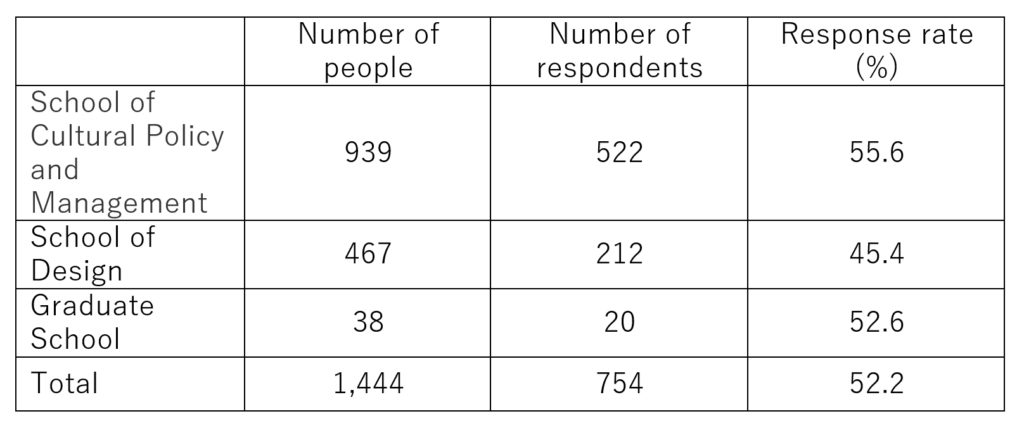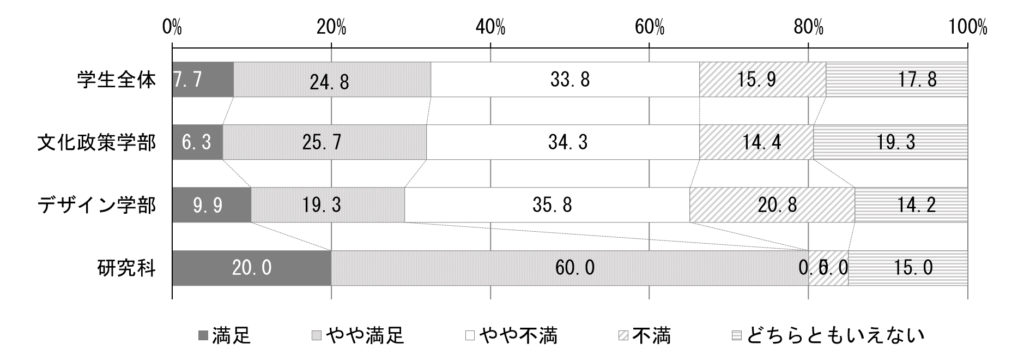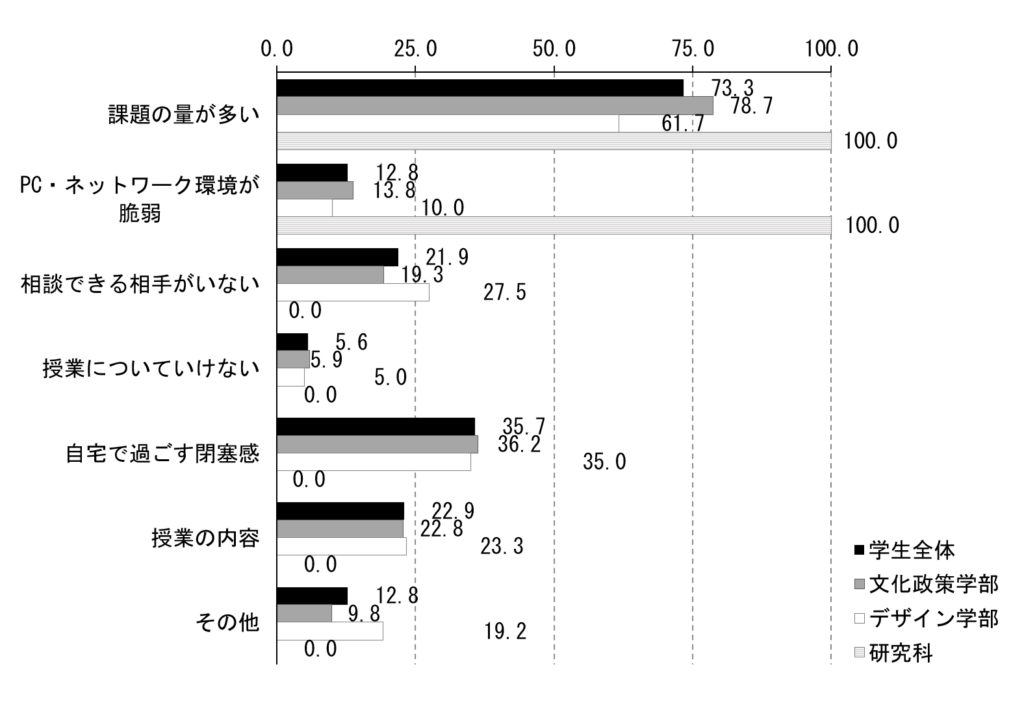Design Class Policy for 2020
Effectiveness of the System in Distance Learning
On April 17, 2020, the university announced a policy that all first semester classes will be conducted entirely by remote learning from May 11 to August 7, 2020. To make full use of the university’s information facilities, it was recommended that, as a rule, all faculties use the “manaba” learning support system for on-demand classes, and “PowerPoint” files with narration be used for viewing. However, seminar classes and other classes were also allowed in real-time interactive classes. When conducting real-time classes, the use of Microsoft Teams is recommended because all students can use “Office365”. The university, which has about 1,450 students, had only implemented the system in 2017 because it was easy to teach small groups and the need for a learning support system was low. Nearly all the faculty members in this distance learning program are using “manaba”, which shows the effectiveness of the system in an emergency.
Step-by-Step Measures in Design Classes and Exercises
Without the use of the workshop, design classes and seminars face major hindrance to academic work. Therefore, the use of the workshop is permitted from June for only graduating students of the Graduate School of Design and when the faculty members deem it necessary, for seminars and exercises for the Year 3 and 4 students of the School of Design. In addition, we have allowed students who create portfolio works to use it since August and have gradually expanded the range of use. Face-to-face classes were resumed on August 17 for subjects for which infection prevention measures can be taken. Classroom capacity has been reduced to less than 50%, and workshops have been partitioned to meet the safe distancing measures advised by the government. For the second semester, face-to-face classes will be held in classrooms, and for some classes which have difficulties implementing infection control measures, will be held remotely.
Distance Learning for Students
The University conducted an emergency student life survey between July 8 to 15, 2020, to determine the current situation and attitudes of students who have been forced to refrain from going out and having distance learning due to the widespread of the coronavirus. The information serves to inform student support measures and the face-to-face classes that are scheduled to resume. Year 1 to 4 undergraduate students and Year 1 to 2 master’s students were asked to respond to the survey on the Web using the Google Form. The survey report can be downloaded from the University’s website.
The following are excerpts from the “Results of the Survey on Distance Learning” of the University. Please refer to Table 1 for the responses to the survey. If we limit the responses to the design undergraduates, as shown in Table 2, 30% of the students were satisfied with the remote classes and over 50% were dissatisfied. Although we are still in the process of analyzing the results, it can be inferred that the dissatisfaction of Year 1 students is high, and the dissatisfaction tends to decrease as students become more advanced students. The percentage of dissatisfaction is likely to vary depending on the content of the class, such as lectures that can be taught remotely and practical skills exercises that are difficult to be taught remotely. There were some complains, as shown in Table 3 because of distance learning as an emergency measure this year. However, in the past, it wasn’t easy to conduct a special lecture with an invited designer from overseas. This time, we can easily run the lecture online, which is the advantage of distance learning. Even after the outbreak of the new coronavirus has ended, we can expect that lessons that take advantage of distance learning will continue to grow in popularity.
Table 1: Responses to the Distance Learning Survey
Number of Respondents and Response Rate (by Faculty and Graduate School)

Table 2: Overall Impressions of Distance Learning

Table 3: Reasons for Dissatisfaction with Distance Learning
(For respondents who were “Dissatisfied” or “Slightly dissatisfied” in Table 2, select up to two main items)

2021.7.2

 Return to List
Return to List